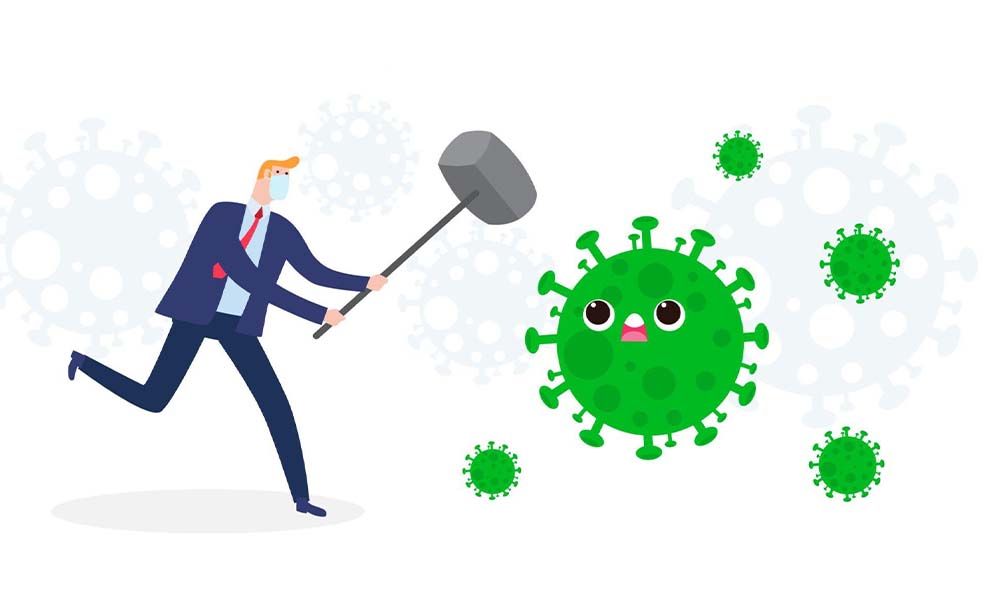Antimicrobial resistance (AMR) has emerged as a pressing global health crisis, posing a serious threat to the effectiveness of antibiotics and other antimicrobial drugs. Previously treatable infections are becoming more difficult, and in some cases impossible, to cure as bacteria, viruses, parasites, and fungi develop resistance to these medications. This alarming phenomenon has significant implications for both human and animal health, leading to increased morbidity, mortality, and healthcare costs. In this article, we will delve into the complex issue of antimicrobial resistance, exploring its causes, consequences, and potential solutions.
Table of Contents
ToggleWhat is Antimicrobial Resistance?

Antimicrobial resistance refers to the ability of microorganisms, such as bacteria, viruses, parasites, and fungi, to withstand the effects of antimicrobial drugs. These drugs, which include antibiotics, antivirals, antifungals, and antiparasitics, are used to treat infections in humans and animals. However, over time, the microorganisms can adapt and develop mechanisms to survive the drugs, rendering them ineffective. This resistance can occur naturally, but it is primarily driven by the misuse and overuse of antimicrobial drugs.
Antibiotics, in particular, are commonly prescribed for bacterial infections in humans and animals. However, they are often used inappropriately, such as for viral infections or as a preventative measure, leading to the emergence and spread of antibiotic-resistant bacteria. This misuse of antibiotics is a significant contributor to the development of antimicrobial resistance.
Causes and Risk Factors of Antimicrobial Resistance
The causes of antimicrobial resistance are multifaceted and involve both human and animal factors. One of the primary drivers is the overuse and misuse of antimicrobial drugs. This includes the inappropriate use of antibiotics in humans, such as self-medication or non-compliance with prescribed dosages. In the agricultural sector, antibiotics are often used as growth promoters and for disease prevention in livestock, contributing to the development of resistant bacteria.
Other factors that contribute to antimicrobial resistance include poor infection prevention and control practices, inadequate surveillance systems to monitor the spread of resistant pathogens, and the lack of access to clean water, sanitation, and hygiene facilities. Additionally, the global movement of people and goods facilitates the spread of resistant microorganisms across borders, making it a global concern that requires international collaboration.
The Impact of Antimicrobial Resistance on Public Health

The impact of antimicrobial resistance on public health is far-reaching. It affects individuals of all ages and can lead to severe illness, prolonged hospital stays, and increased healthcare costs. Infections that were once easily treatable with antibiotics can now become life-threatening, resulting in higher mortality rates. Vulnerable populations, such as the elderly, young children, and those with weakened immune systems, are particularly at risk.
In addition to the direct impact on human health, antimicrobial resistance also affects animal health and welfare. In the agricultural sector, the emergence of resistant bacteria can lead to significant economic losses due to decreased productivity and increased treatment costs. Furthermore, the transfer of resistant microorganisms between animals and humans through the food chain poses a potential public health risk.
Common Misconceptions about Antimicrobial Resistance
There are several common misconceptions about antimicrobial resistance that need to be addressed. One misconception is that resistance only occurs in people who use antibiotics frequently. In reality, resistance can develop in anyone who is exposed to antimicrobial drugs, regardless of their frequency of use. Another misconception is that resistance is only a problem in hospitals or healthcare settings. While healthcare-associated infections are a significant concern, resistance can also emerge in community settings and the agricultural sector.
It is also important to dispel the myth that resistance can be reversed once it has developed. While it is possible to slow down the rate of resistance, reversing it completely is challenging. Prevention and responsible use of antimicrobial drugs are key in combating antimicrobial resistance.
Strategies to Combat Antimicrobial Resistance
Addressing antimicrobial resistance requires a multi-faceted approach that involves collaboration between healthcare providers, policymakers, researchers, and the general public. Several strategies have been identified to combat this growing threat.
First and foremost, promoting the appropriate use of antibiotics is crucial. This involves educating healthcare professionals and the public about the importance of using antibiotics only when necessary, completing the full course of prescribed antibiotics, and avoiding self-medication. Implementing infection prevention and control measures, such as hand hygiene and proper sterilization techniques, is another essential strategy.
In addition to these measures, investing in the development of new antimicrobial drugs is vital. However, it is equally important to ensure their responsible use to prevent the rapid development of resistance. Enhanced surveillance systems that monitor the spread of resistant pathogens and track patterns of antimicrobial use can also help in identifying emerging resistance and implementing targeted interventions.
The Role of Healthcare Providers in Preventing Antimicrobial Resistance

Healthcare providers play a crucial role in preventing antimicrobial resistance. They are responsible for prescribing and managing antibiotics, making their decisions pivotal in combating resistance. It is essential for healthcare professionals to follow evidence-based guidelines when prescribing antibiotics, ensuring that the right drug is prescribed at the right dose for the right duration. They should also educate patients about the appropriate use of antibiotics and the importance of completing the full course of treatment.
Furthermore, healthcare providers can contribute to infection prevention and control efforts by implementing best practices in healthcare settings. This includes practicing good hand hygiene, using personal protective equipment when necessary, and implementing appropriate sterilization techniques. By taking these measures, healthcare providers can help reduce the spread of resistant microorganisms and preserve the effectiveness of antimicrobial drugs.
The Importance of Proper Antibiotic Use
Proper antibiotic use is crucial in preserving the effectiveness of these drugs and preventing the development of antimicrobial resistance. When antibiotics are prescribed, it is essential to take them as directed and complete the full course of treatment, even if symptoms improve. Stopping antibiotics prematurely can promote the survival of resistant bacteria, as the remaining bacteria may have a higher chance of developing resistance.
It is also important to avoid self-medication with antibiotics and to only use them when prescribed by a healthcare professional. Antibiotics should never be shared or saved for later use, as this can contribute to the development of resistance. Additionally, it is essential to dispose of unused antibiotics properly, following local guidelines to prevent environmental contamination.
Promoting Awareness and Education about Antimicrobial Resistance
Raising awareness and educating the public about antimicrobial resistance is vital in changing behaviors and promoting responsible use of antimicrobial drugs. This includes disseminating information about the appropriate use of antibiotics, the consequences of misuse, and the importance of completing the full course of treatment. Educational campaigns can be conducted through various channels, including schools, healthcare facilities, and the media, to reach a wide audience.
In addition to public education, healthcare professionals should receive ongoing training and education on antimicrobial stewardship. This can help them stay updated on the latest guidelines and best practices for prescribing antibiotics, ensuring that they are equipped to make informed decisions and educate their patients effectively.
Research and Development Efforts in Antimicrobial Resistance

Research and development efforts are crucial in addressing antimicrobial resistance. The discovery of new antimicrobial drugs and alternative treatment options is essential to combat emerging resistance. However, the development of new drugs alone is not enough. It is equally important to invest in research that focuses on understanding the mechanisms of resistance, identifying strategies to prevent its development, and finding innovative approaches to combat resistant pathogens.
Collaboration between researchers, pharmaceutical companies, and regulatory agencies is essential to accelerate the development and approval of new antimicrobial drugs. Governments and international organizations also play a vital role in providing funding and support for research efforts, ensuring that the necessary resources are available to tackle antimicrobial resistance effectively.
Frequently Asked Questions
What is antimicrobial resistance (AMR), and why is it considered a global health crisis?
Antimicrobial resistance refers to the ability of microorganisms (bacteria, viruses, fungi) to resist the effects of antimicrobial drugs, such as antibiotics and antivirals. It’s a global health crisis because it jeopardizes our ability to treat infectious diseases effectively and increases the risk of prolonged illnesses, higher healthcare costs, and even mortality.
What causes antimicrobial resistance, and how does it develop?
AMR develops primarily due to the overuse and misuse of antimicrobial drugs in both human and animal healthcare. When microorganisms are exposed to antimicrobials, some can adapt and become resistant, leading to the spread of resistant strains.
How does antimicrobial resistance affect patient care and treatment options?
AMR can limit treatment options for infections, making them more challenging to cure. Patients may experience longer hospital stays, more severe illnesses, and the need for more expensive and potentially toxic drugs.
What can individuals do to help combat antimicrobial resistance?
Individuals can help combat AMR by using antibiotics and antivirals only when prescribed by a healthcare professional, completing the full course of treatment as directed, never sharing antibiotics, and practicing good hygiene to prevent infections.
What efforts are being made globally to address antimicrobial resistance?
Global initiatives involve developing and implementing antibiotic stewardship programs, improving infection prevention and control measures, researching and developing new antimicrobials, and raising awareness about AMR’s dangers.
How do healthcare providers contribute to the fight against antimicrobial resistance?
Healthcare providers play a crucial role in combatting AMR by prescribing antibiotics judiciously, adhering to infection prevention guidelines, and educating patients about the responsible use of antimicrobials.
What are the potential consequences if we do not address antimicrobial resistance effectively?
If we do not address AMR effectively, we may face a future where common infections become life-threatening, routine medical procedures become riskier due to the lack of effective antibiotics, and healthcare costs escalate significantly. Additionally, the progress made in modern medicine could be jeopardized.
Conclusion
Antimicrobial resistance is a complex and pressing healthcare challenge that requires immediate attention and action. The consequences of inaction are dire, with the potential for increased morbidity, mortality, and healthcare costs. Addressing this crisis requires a multi-faceted approach that involves collaboration between healthcare providers, policymakers, researchers, and the general public.
By promoting appropriate use of antibiotics, implementing infection prevention and control measures, investing in research and development, and enhancing surveillance systems, we can work towards preserving the effectiveness of antimicrobial drugs for future generations. It is only through collective efforts and global coordination that we can combat antimicrobial resistance and ensure a healthier and safer future for all.


